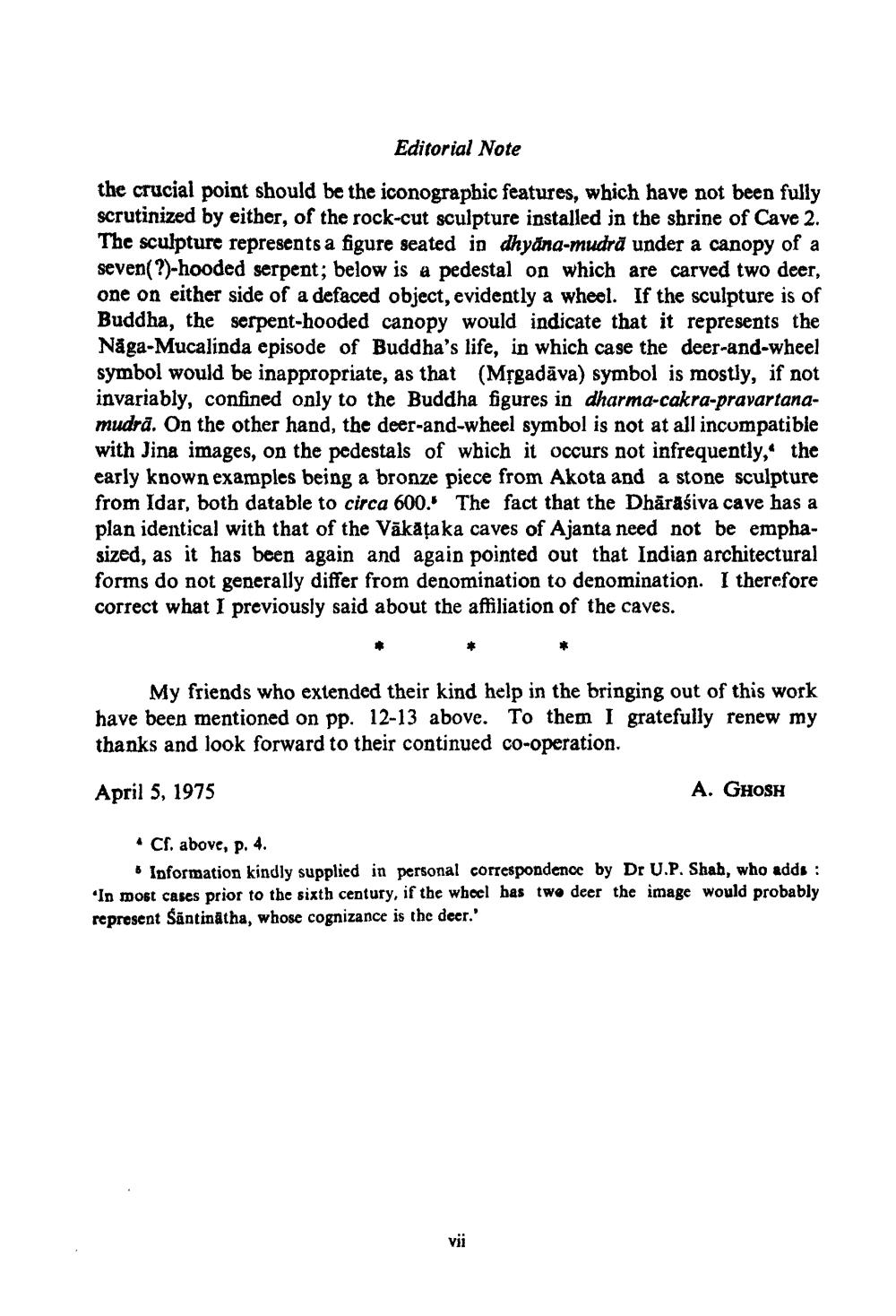________________
Editorial Note
the crucial point should be the iconographic features, which have not been fully scrutinized by either, of the rock-cut sculpture installed in the shrine of Cave 2. The sculpture represents a figure seated in dhyāna-mudra under a canopy of a seven(?)-hooded serpent; below is a pedestal on which are carved two deer, one on either side of a defaced object, evidently a wheel. If the sculpture is of Buddha, the serpent-hooded canopy would indicate that it represents the Någa-Mucalinda episode of Buddha's life, in which case the deer-and-wheel symbol would be inappropriate, as that (Mțgadāva) symbol is mostly, if not invariably, confined only to the Buddha figures in dharma-cakra-pravartanamudra. On the other hand, the deer-and-wheel symbol is not at all incompatible with Jina images, on the pedestals of which it occurs not infrequently, the early known examples being a bronze piece from Akota and a stone sculpture from Idar, both datable to circa 600. The fact that the Dhārāśiva cave has a plan identical with that of the Vākāțaka caves of Ajanta need not be emphasized, as it has been again and again pointed out that Indian architectural forms do not generally differ from denomination to denomination. I therefore correct what I previously said about the affiliation of the caves.
My friends who extended their kind help in the bringing out of this work have been mentioned on pp. 12-13 above. To them I gratefully renew my thanks and look forward to their continued co-operation.
April 5, 1975
A. GHOSH
* Cf. above, p. 4.
* Information kindly supplied in personal correspondence by Dr U.P. Shah, who adds : 'In most cases prior to the sixth century, if the wheel has two deer the image would probably represent Säntinātha, whose cognizance is the deer.'




